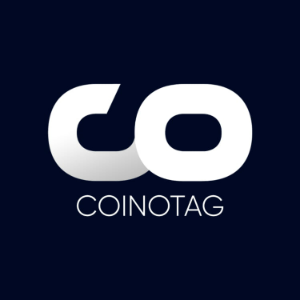Solana Transaction Sequencing: Jito’s Revolutionary BAM Unlocks Unprecedented Efficiency
7 min read
BitcoinWorld Solana Transaction Sequencing: Jito’s Revolutionary BAM Unlocks Unprecedented Efficiency Are you tracking the pulse of Solana’s rapid evolution? The blockchain world is constantly innovating, and a major leap forward is on the horizon for Solana’s performance. The Jito Foundation has just unveiled its groundbreaking Block Assembly Marketplace (BAM), a pivotal development set to redefine Solana transaction sequencing and significantly enhance the network’s efficiency and fairness. This isn’t just an upgrade; it’s a fundamental shift in how transactions are ordered and processed on one of the fastest blockchains. What is Jito’s Block Assembly Marketplace (BAM)? At its core, Jito’s Block Assembly Marketplace (BAM) is designed to optimize the process of block building and transaction sequencing on the Solana blockchain. Think of it as a highly sophisticated, transparent auction house for blockspace. In traditional blockchain models, the ordering of transactions within a block can be opaque, often leading to issues like Maximal Extractable Value (MEV) being exploited by sophisticated actors. BAM seeks to bring clarity and fairness to this crucial process. Jito Foundation’s initiative aims to achieve several critical objectives: Increase Transparency: Making the block building process more visible to all participants. Reduce MEV Impact: Minimizing the negative effects of MEV, which can include front-running and sandwich attacks. Enable New Revenue Models: Creating opportunities for validators and developers through programmable blockspace. This innovative approach is built on a modular system, incorporating secure hardware and distinct roles for different network participants, ensuring a robust and equitable environment for Solana transaction sequencing . Why is Efficient Solana Transaction Sequencing So Crucial? In a high-throughput blockchain like Solana, the speed and order in which transactions are processed are paramount. Imagine a bustling digital city where millions of requests are made every second. Without an efficient and fair system for managing these requests, chaos can ensue. This is where Solana transaction sequencing becomes critical. One of the primary challenges in blockchain transaction ordering is Maximal Extractable Value (MEV). MEV refers to the profit that can be extracted by block producers (like validators) by including, excluding, or reordering transactions within a block. While some forms of MEV are benign, others can lead to: Front-running: Where a malicious actor places their transaction ahead of a legitimate user’s transaction to profit from price movements. Sandwich Attacks: Buying an asset just before a large user purchase drives up the price, then selling it immediately after for a profit. Liquidation Exploits: Profiting from liquidating undercollateralized positions. These activities can erode user trust, introduce systemic risk, and make the network less fair for ordinary participants. By enhancing Solana transaction sequencing , Jito BAM directly addresses these vulnerabilities, aiming to create a more level playing field for everyone. How Does BAM Revolutionize Solana Transaction Sequencing? Jito BAM introduces a sophisticated architecture designed to optimize transaction ordering and block construction. Its revolutionary approach hinges on several key technological components and a modular system: Secure Hardware (TEEs): BAM leverages Trusted Execution Environments (TEEs). These are isolated, secure areas within a processor that guarantee the integrity and confidentiality of code and data, even if the rest of the system is compromised. For BAM, TEEs ensure that the logic for sequencing transactions and constructing blocks remains private and tamper-proof, preventing validators or other malicious actors from manipulating the order for MEV extraction. Modular System Design: BAM is not a monolithic solution but a system comprising distinct, interconnected components: Component Role Benefit for Solana Transaction Sequencing BAM Nodes Process bids from searchers (entities seeking optimal transaction ordering) and generate optimal block templates within TEEs. Ensures fair and private ordering of transactions, minimizing MEV exploitation. Validators Receive encrypted block templates from BAM Nodes and propose/finalize blocks on the Solana network. Upholds network integrity and decentralization by integrating BAM’s optimized blocks. Developer Plugins Allow developers to implement custom logic for transaction ordering and block construction within BAM. Enables programmable blockspace, fostering innovation and new revenue models beyond traditional MEV. This modular design, combined with the security of TEEs, creates a robust framework for transparent and efficient Solana transaction sequencing , allowing the network to scale and operate with greater integrity. What Are the Benefits of This Enhanced Solana Transaction Sequencing? The introduction of Jito BAM brings a multitude of benefits to the Solana ecosystem, impacting users, validators, and developers alike. This enhancement in Solana transaction sequencing isn’t just a technical upgrade; it’s a strategic move towards a more equitable and robust blockchain environment. Key advantages include: Increased Transparency: By providing a clear, auction-based mechanism for blockspace, BAM sheds light on what was once an opaque process. This transparency helps in understanding how transactions are prioritized and included in blocks. Reduced MEV Impact: Perhaps the most significant benefit, BAM’s design, particularly with the use of TEEs, aims to minimize the ability of malicious actors to extract value through front-running or other exploitative MEV strategies. This means a fairer playing field for all users. New Revenue Models for Validators: Instead of relying on potentially extractive MEV strategies, validators can now earn revenue through legitimate and transparent blockspace auctions. This provides a sustainable and ethical income stream, aligning incentives with network health. Fairer User Experience: With reduced MEV and increased transparency, everyday users can submit transactions with greater confidence, knowing they are less likely to be exploited. This improves the overall user experience on Solana. Enhanced Network Stability and Efficiency: By optimizing block construction and reducing the incentive for harmful MEV, BAM contributes to a more predictable and stable network. This can lead to faster finality and a smoother overall operation for Solana transaction sequencing . Innovation through Programmable Blockspace: The ability for developers to create plugins and customize transaction ordering logic opens up new avenues for innovation. This could lead to novel applications and services built on Solana, leveraging the enhanced blockspace capabilities. These benefits collectively strengthen Solana’s position as a leading blockchain, making it more attractive for both existing and new participants. Looking Ahead: The Future of Solana Transaction Sequencing with BAM The launch of Jito’s Block Assembly Marketplace on mainnet is eagerly anticipated by the Solana community. As reported by CoinDesk, the mainnet launch is expected in the coming weeks, a significant milestone that will usher in a new era for Solana transaction sequencing . The strong support from major Solana validators indicates a collective belief in BAM’s potential to transform the network. This widespread adoption is crucial for the success of such a system, as validators are key players in block production. Their commitment underscores the perceived value and necessity of a more transparent and efficient block building process. In the long term, BAM is poised to solidify Solana’s reputation as a high-performance blockchain that prioritizes fairness and decentralization. By addressing the complexities of MEV and offering a more equitable system for transaction ordering, Jito is not just improving Solana’s current state but also paving the way for its future growth and adoption. This development could set a new industry standard for how high-throughput blockchains manage their blockspace, influencing other networks to adopt similar transparent and efficient mechanisms for their own transaction sequencing. Conclusion Jito Foundation’s Block Assembly Marketplace represents a monumental leap forward for the Solana ecosystem. By introducing a transparent, secure, and programmable method for Solana transaction sequencing , BAM tackles one of the blockchain’s most intricate challenges: Maximal Extractable Value. Its innovative use of secure hardware and a modular design promises not only to mitigate the adverse effects of MEV but also to unlock new revenue streams for validators and foster greater innovation among developers. As the mainnet launch approaches, the anticipation is palpable, signaling a brighter, fairer, and more efficient future for Solana and its vibrant community. This initiative is a testament to the continuous evolution of blockchain technology, striving for a truly decentralized and equitable digital economy. Frequently Asked Questions (FAQs) What is Jito BAM? Jito BAM (Block Assembly Marketplace) is a new system launched by the Jito Foundation designed to enhance block building and transaction sequencing on the Solana blockchain. It aims to increase transparency, reduce the negative impact of Maximal Extractable Value (MEV), and enable new revenue models through programmable blockspace. How does Jito BAM reduce MEV? Jito BAM reduces MEV by utilizing secure hardware (Trusted Execution Environments or TEEs) to process transaction ordering bids privately and fairly. This prevents validators or other actors from front-running or reordering transactions for personal gain, thereby minimizing exploitative MEV strategies. What are TEEs in the context of BAM? TEEs (Trusted Execution Environments) are secure, isolated areas within a computer’s processor. In Jito BAM, TEEs are used by BAM Nodes to process bids and construct block templates in a way that is tamper-proof and confidential, ensuring that the transaction sequencing logic cannot be manipulated. When is Jito BAM expected to launch on mainnet? As reported by CoinDesk, Jito BAM’s mainnet launch is expected in the coming weeks. It will be supported by major Solana validators, indicating strong ecosystem adoption. Who benefits most from Jito BAM? Jito BAM benefits all participants in the Solana ecosystem. Users gain a fairer and more predictable transaction experience due to reduced MEV. Validators can access new, transparent revenue models. Developers benefit from programmable blockspace, which enables new forms of innovation and application development on Solana. Is Jito BAM a centralized solution? No, Jito BAM is designed to enhance decentralization and fairness. While it introduces a structured marketplace, its reliance on secure hardware (TEEs) and a modular system involving multiple participants (BAM Nodes, Validators, Developers) aims to distribute power and ensure transparency, rather than centralize it. If you found this deep dive into Jito’s Block Assembly Marketplace and its profound impact on Solana transaction sequencing insightful, please share this article with your network on social media! Help us spread awareness about this pivotal development that’s shaping the future of decentralized finance. To learn more about the latest crypto market trends, explore our article on key developments shaping Solana price action. This post Solana Transaction Sequencing: Jito’s Revolutionary BAM Unlocks Unprecedented Efficiency first appeared on BitcoinWorld and is written by Editorial Team

Source: Bitcoin World



